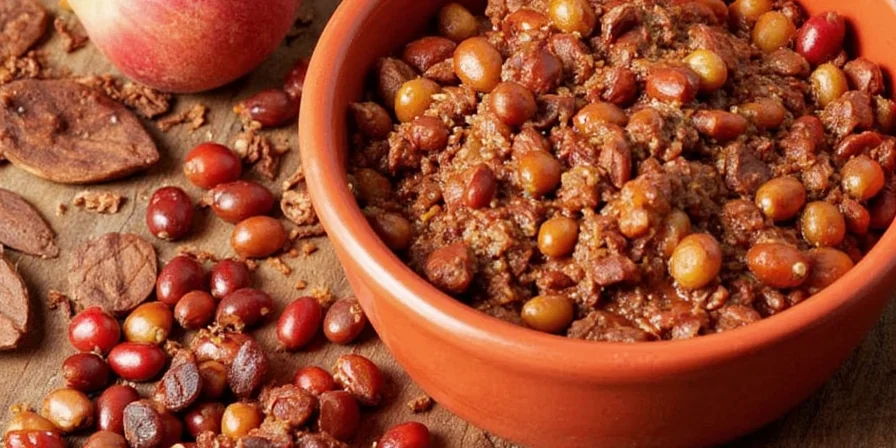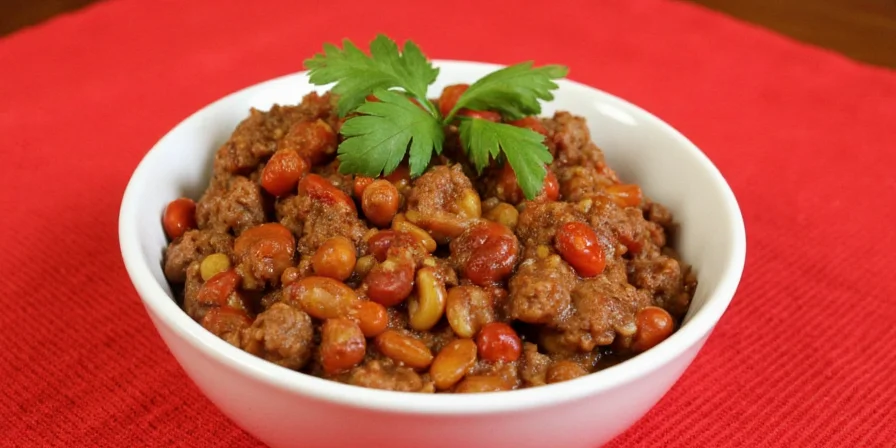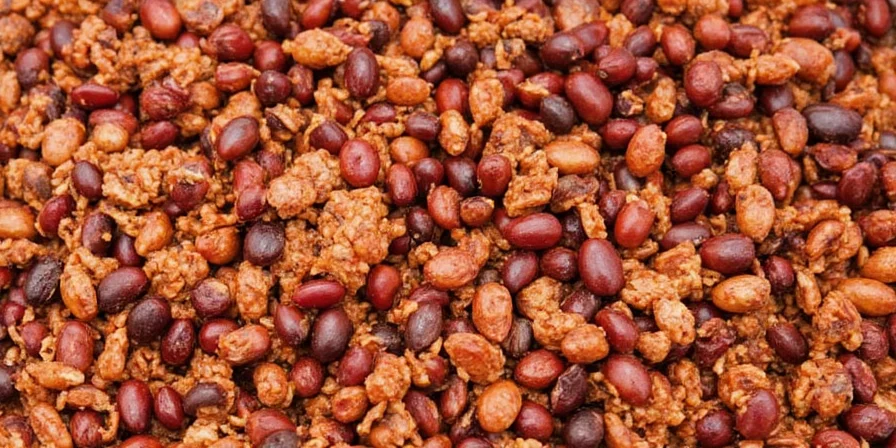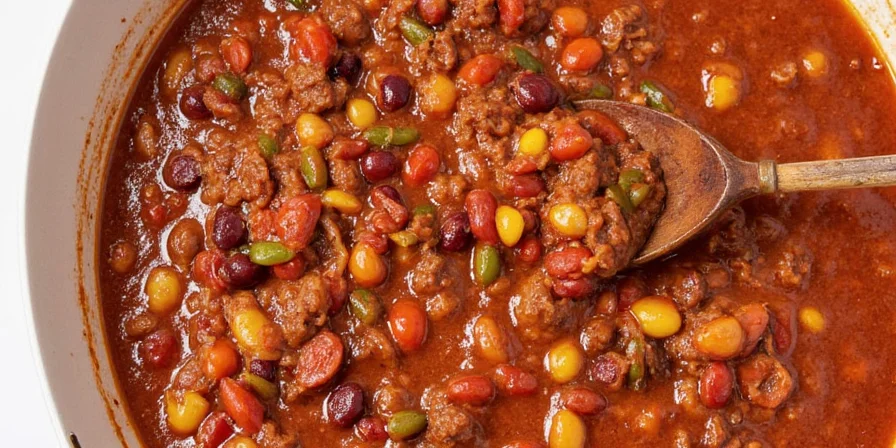Spice It Up! The Global Journey of Chili with Ground Beef and Beans
Welcome to a sizzling journey across continents and cultures — where we dive deep into the heartwarming world of chili with ground beef and beans. This dish isn’t just about meat and legumes simmered in spices; it’s a melting pot of global flavors, traditions, and a dash of soul.
Why Chili? Because Flavor Knows No Borders!
Whether you're slurping Texas-style chili on a cold night or savoring a smoky Southwestern bowl at a summer cookout, one thing's for sure — chili is universal. But have you ever wondered why this humble dish has traveled so far and wide? Let's uncover its spice-laden secrets.
The Holy Trinity: Ground Beef, Beans, and Spices
- Ground Beef: The protein powerhouse that gives body and richness.
- Beans: The fiber-filled flavor sponge that absorbs every ounce of spice.
- Spices: The soul of the dish. Without them, it’s just meaty soup.
A World of Chili: Regional Twists Across the Globe 🌍
While American chili might be your comfort zone, let’s not forget the international variations that bring unique spice blends to the table. Here's a quick comparison of how different regions play with the same core ingredients:
| Region | Base Ingredients | Signature Spices | Unique Twist |
|---|---|---|---|
| USA (Texas) | Ground beef, tomatoes | Chili powder, cumin | No beans allowed — purist style |
| Mexico (Puebla) | Pork, chocolate, nuts | Ancho chili, cinnamon | Sweet and spicy Mole-inspired chili |
| India (Goa) | Goat meat, coconut milk | Kashmiri chili, coriander | Creamy curry-chili fusion |
| South Africa | Lamb, dried apricots | Berber spice mix | Sweet, spicy, and richly spiced stew |
Pro Tips: How to Make Your Chili Pop with Spice 🔥
You don't need a Michelin star to make a stellar chili. Just follow these five essential tips and you'll be crowned chili king or queen of your kitchen!
- To Brown or Not to Brown? Definitely brown your ground beef! It adds depth and umami that can’t be beaten.
- Toast Your Spices! Dry-toasting whole spices like cumin seeds before grinding enhances their aroma and flavor profile.
- Add Acid Later — Tomatoes are acidic, so add them after browning the meat to avoid toughening it.
- Bean Timing Matters — Add canned beans near the end to prevent mushiness. Dried beans? Soak and pre-cook separately.
- Rest it Right — Letting your chili sit overnight allows flavors to meld beautifully.
Visual Guide: The Chili Spice Palette 🎨

From paprika to smoked chipotle, each spice plays a role in building layers of flavor. Use this guide to pick the right blend for your taste buds.
Hot or Not: Choosing Your Chili Pepper Level
Heat is subjective, but science helps. Here’s a breakdown of common chili peppers used in chili recipes and their Scoville scale ratings:
| Pepper | Scoville Units | Taste Notes | Best For |
|---|---|---|---|
| Guajillo | 2,500–5,000 | Fruity, smoky | Mild to medium heat lovers |
| Ancho | 1,000–2,000 | Sweet, raisin-like | Deep, earthy flavor base |
| Jalapeño | 2,500–8,000 | Grassy, crisp | Fresh kick without overwhelming heat |
| Chipotle | 5,000–10,000 | Smoky, intense | Adding bold, campfire notes |
| Habanero | 100,000–350,000 | Tropical fruit, citrusy | Daredevil heat seekers only! |
Pro Tip: Balance Heat with Fat or Acid
If your chili gets too hot, try adding a splash of lime juice, yogurt, or even a spoonful of peanut butter. They’ll mellow the fire without killing the flavor.
How to Build the Ultimate Chili Bowl 🥣
You’ve made the perfect chili — now what? Layer on the toppings like a pro with these ideas:
- Shredded cheddar or cotija cheese
- Chopped green onions or cilantro
- Sour cream or Greek yogurt swirl
- Avocado chunks or guacamole dollop
- Corn chips or tortilla strips for crunch

Pro tip: Don’t skimp on texture! A good chili bowl should offer crunch, creaminess, and heat in every bite.
Pairing Sips with Spice: Drinks to Complement Your Chili 🍺
Spicy food deserves a refreshing or complementary drink. Try these:
- Beer: A malty lager balances heat well.
- Margarita: Citrus cuts through richness and refreshes your palate.
- Iced Tea: Unsweetened or lightly sweetened works best.
- Milk: Casein in milk helps neutralize capsaicin (the heat compound).

Make Ahead Magic: Storing and Reheating Chili Like a Pro
Good news: chili tastes better the next day! Store in an airtight container in the fridge for up to 4 days or freeze for up to 3 months.
- Reheat on the stovetop with a splash of water or broth to keep it from drying out.
- Don’t microwave unless necessary — it can make beans rubbery.
Common Mistakes (and How to Avoid Them)
We all love chili, but even seasoned cooks make slip-ups. Here are the top three pitfalls and how to dodge them:
| Mistake | Consequence | Fix/Prevention |
|---|---|---|
| Overloading with salt | Too salty to enjoy | Add a peeled potato while simmering to absorb excess salt |
| Boiling instead of simmering | Tough meat, broken beans | Simmer gently and stir occasionally |
| Skipping the resting time | Flavors haven’t fully developed | Let rest at least 30 minutes before serving |
Conclusion: Spice, Meat, Beans — A Love Story for the Ages
In the world of comfort food, few dishes tell as many stories or travel as far as chili with ground beef and beans. Whether you’re sticking to tradition or blazing your own trail, remember: chili is more than a meal — it’s a celebration of culture, flavor, and community.
So go ahead, grab your favorite spices, crank up the heat, and make something unforgettable. And when someone asks if you want beans in your chili — well, that’s entirely up to you. 😎

Now get cooking — your next masterpiece is waiting in the pot!











 浙公网安备
33010002000092号
浙公网安备
33010002000092号 浙B2-20120091-4
浙B2-20120091-4